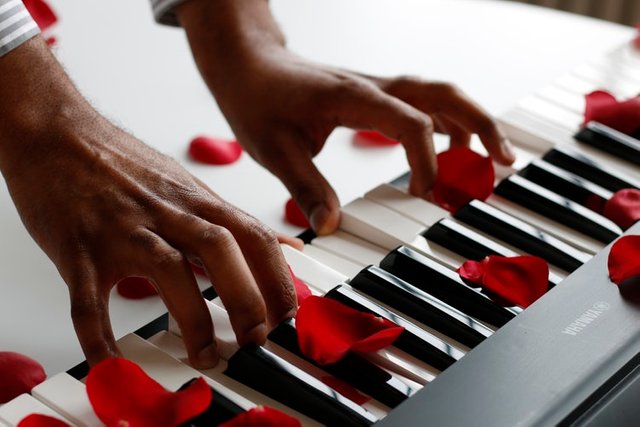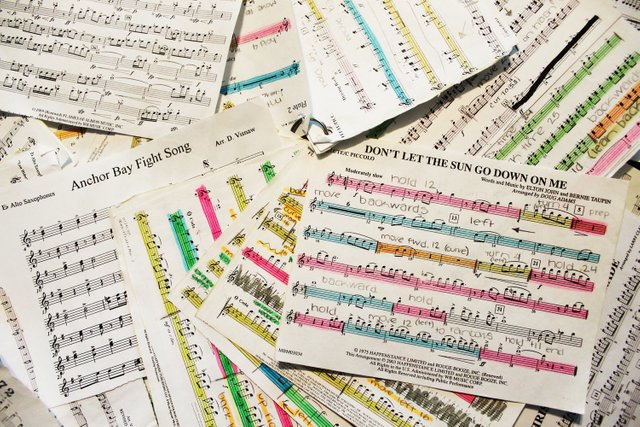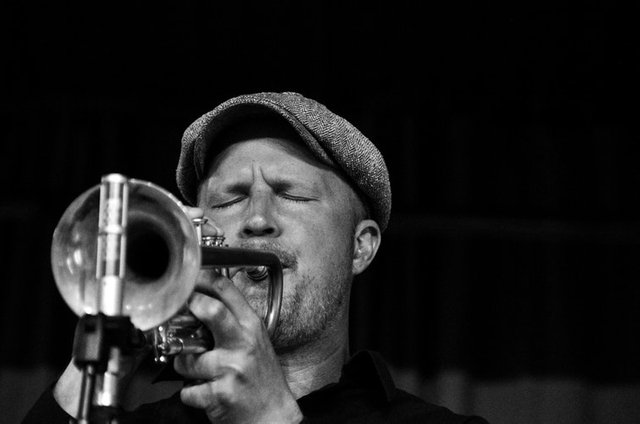
Image Source
I hope people are finding these practice tip posts useful. I would love to hear from folks about how your practice is going. My fiddle practice is going great I recently reviewed some videos I took of myself about 5 weeks ago and I can notice a definite improvement which make me very happy.I am still having problems using my 4th finger (pinky) it seems a lot harder than on other instruments. Everything seems to be harder on the fiddle!
Todays post will take a look at the difference between using musical notation to learn and practice tunes verses learning using your ear. It seems that some people find it easier to learn from reading music whilst others are quite comfortable using their ear. Myself I do a bit of both. Often tunes are played very fast and it is difficult to hear every note unless you are able to slow it down. Luckily YouTube has a settings gear wheels which allows you to set the playback speed so you can slow the piece down to a manageable speed.
I get some of my tunes from the Internet where there are often several versions to choose from, others I get from listening to someone else playing. The sheet music is useful even when I have learned it by ear to make sure I have got it right.
Both Sheet Music & Auditory Absorption are Equally useful for Practice & Learning.
Playing From Memory or Improvising using Your Ear is Superior to Performing using Sheet Music
Sheet Music
Sheet music is useful as a reminder of how the tune goes if you do not have the recording handy each time you pick up your instrument to practice. Because many fiddle tunes are very similar it can take a while before the tune is firmly embedded in my memory. The sheet music acts a a useful reminder on hoe it starts and then I usually can take it from there.
The sheet music contains a lot of useful information apart from the basic notes in the tune. It often will tell you who the composer is, what tempo to use, the key signature (what key it is in), where the accents are, where the slurs are to name a few.
Learning By Ear
Learning by ear is a method I picked up when I was very young during my piano lessons. I would watch and listen to my teacher playing the piece and pick it up bit by bit during my practice sessions. We were always expected to play from the sheet music and I lost count of the times I was caught not paying attention to the sheet music. My teacher would ask me to point where I was up to and I had to quickly scan the sheet music and work it out. This was considered bad and I was often scolded for it.
When I started playing folk music and discovered that it was considered an asset to be able to pick up the tunes by ear I was delighted. Finally I could practice this skill without guilt.
How to train your ear
There are certain techniques which can really help you too develop skills to pick up new tunes by ear.
- Learn to recognise the various intervals of the scale. Practice singing and playing each interval of the scale from the tonic (1st not of the scale) After some practice you will find that you can easily recognise a 5th interval or a 7th interval. for example.
- Learning to recognise intervals will also help you to identify the chord progressions of a tune or song.
- Practice hearing short phrases in a recording and then playing them on your instrument. You should be able to hear if you got it right.
Left Brain vv Right Brain
The left side of your brain is responsible for logic, methodical processes like mathematics, while the right side of the brain is used for artistic expression, emotional responses and musical expression
The left side of the brain controls thew functions of the right side of the body and the right side of the brain controls the left side of the body.
These rules can vary in some people, but generally this is believed to be accurate for most.
Learning requires vigorous use of the left brain to commit tunes to memory, learning difficult techniques, new scales and ear training practice.
So how does this affect a musician?
Those musicians who are a slave to the stave (need to have the musical notation in front of them), have to overcome the dominant left brain when they play in order to express their music artistically with feeling. Many virtuoso classical musicians have mastered this but other classical musicians have not.
I have know some extremely skilled pianists that can open any book and play exactly what is on the page, without mistakes and up to tempo. Their skill was unquestionably amazing, but I felt that their musical recital lacked depth and emotion. Those who play in orchestras have the conductor to assist their musical expression, without whom some can fail to express that unwritten emotion in the music.
Playing music from memory enables the musician to fully engage the right side of the brain and capture the audience with the deep emotion that is expressed in their music. Right brain musical expression come straight from the heart. (On the left side of the body controlled by the right hemisphere of the brain.)
Because the left brain is required to concentrate and read musical notation, playing by ear (improvising) or playing from memory offers the optimum opportunity for artistic musical expression.
In case you missed any of the other posts in this series please follow the links below and if you would like to ask any questions or make a comment please use the comment section of this post to do so. This is to ensure that you receive credit for your contribution.
Mandolu's Music Practice Tips Blogpost No. 1
Mandolu's Music Practice Tips Blogpost No. 2 Fun With Scales
Mandolu's Music Practice Tips Blogpost No. 3 Listening Skills
Mandolu's Music Practice Tips Blogpost No. 4 Relaxation
Mandolu's Music Practice Tips Blogpost No. 5 Practice with a Friend
Mandolu's Music Practice Tips Blogpost No. 6 Recordings & Videos




Congratulations @enjoycompany! You have completed the following achievement on the Steem blockchain and have been rewarded with new badge(s) :
You can view your badges on your Steem Board and compare to others on the Steem Ranking
If you no longer want to receive notifications, reply to this comment with the word
STOPDownvoting a post can decrease pending rewards and make it less visible. Common reasons:
Submit